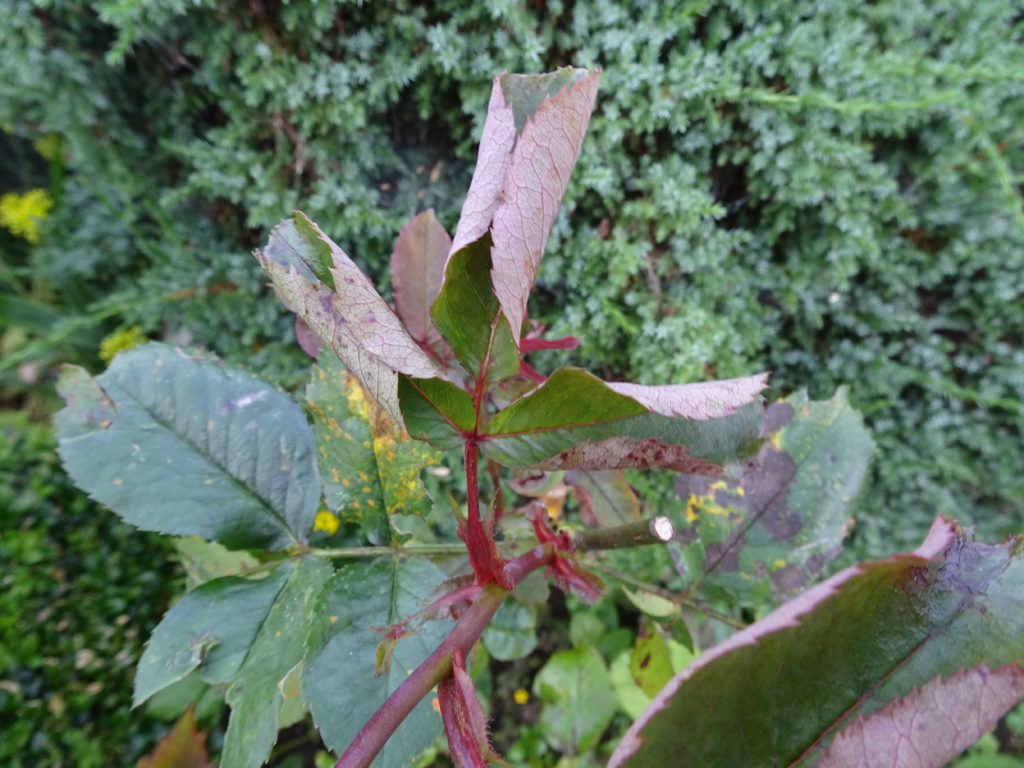Enemies of Roses That Affect You
I do not want to start by worrying you but I am probably going too anyway! After an early summer of brilliant rose displays the down side is the number and volume of enemies our roses are having to contend with.
This is Nothing New
- I am borrowing heavily from the National Rose Society publications including the title of this post ‘The Enemies of the Rose.’
- The national rose society’s handbook on the insect, pests and fungus of the rose was first published in 1908 – over a century ago.
- My copy is the third edition from 1952. I can’t find a more recent edition nor current reprints. Old copies surface at secondhand booksellers and are crammed with over 150 pages of problems.
- For example the contents include a virtual dozen references to a variety of different Sawfly but I get ahead of myself.
- The evils of modern publishing have created a digitised Kindle 2012 edition (? scanned?) and it may be worth the 99p down load but it seems at variance to the older books.
- The collective brains of an Entomologist, Zoologistand an expert in Cryptogams have been combined with 110 years of horticulture experience and specialist knowledge.
Picking Out Some Rose Enemies
- I will not try to paraphrase or emulate the original record but will pick out bits worth further exploration.
- Fungi and bacteria are classified as ‘Diseases’ and insects and sundry creatures as ‘Pests’.
- Sadly developments over time plus health and safety worries have made many of the cures, potions, treatments, unctions, chemical controls and interventions illegal, outdated or unobtainable.
- I am not sure whether Defra, European Union and sundry Ministries such as Agriculture should be classed as ‘The Enemies of the Rose.’
- Bad health in what ever form is potentially just a sign of a rose failing to achieve the growers ideals and aspirations.
- Setting standards is essential but being able to cope with the consequences of weather, breeding, growing conditions and external influences can all be enemies of roses.
- Pests include: thrips, aphids, leaf-hopper, caterpillar, rose maggots, chafer, leaf miner, sawfly, leaf cutter, gall wasps, ants, mites and other maggots and bugs.
- Diseases include: black spot, rust, mildew, leaf scorch, anthracnose, cancker & die back, botrytis (grey mould), gall, silver leaf, chlorosis, sooty mould and variations on the virus and fungus themes.

Another digitised version  . The Enemies of the Rose by George Massee Frederick Vincent 1868- Theobald National Rose Society
.. has been selected by scholars as being culturally important, and is part of the knowledge base of civilization as we know it. This work was reproduced from the original artifact, and remains as true to the original work as possible.
This work is in the public domain in the United States of America, and  you may freely copy and distribute this work. .. As a reproduction of a historical artifact, this work may contain missing or blurred pages, poor pictures, errant marks, etc. Scholars believe, and we concur, that this work is important enough to be preserved, reproduced, and made generally available to the public.